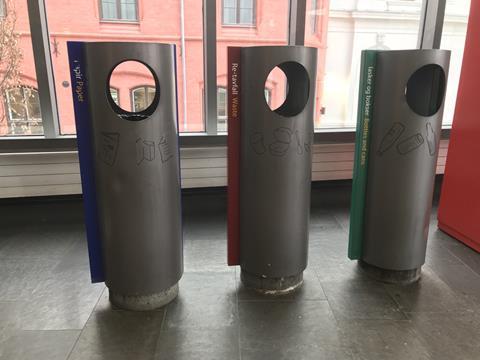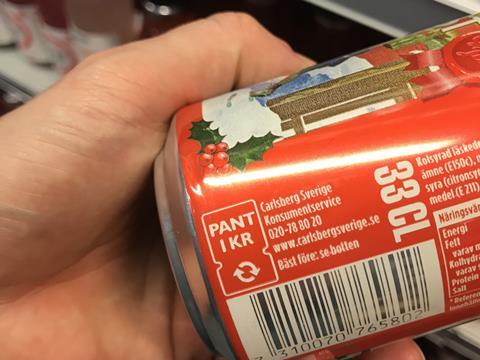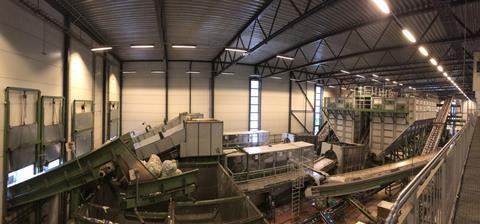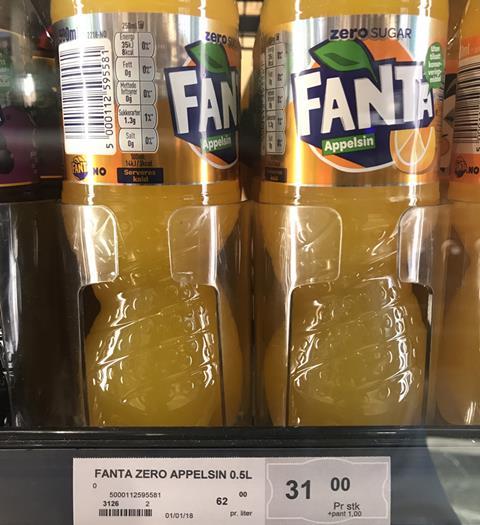
Tracy Sutton, renowned consultant in circular economy packaging design and founder of Root, reports on her recent field trip to study Norway’s waste management systems.
As an expert specialising in sustainable packaging design for over 15 years, I’ve been pleased to observe a significant shift throughout the packaging industry over the past 18 months. While a handful of smart brands have proudly prioritised sustainability at board level for a number of years, recent actions from consumers, campaigners and media have pushed sustainable packaging to the top of many brands’ agendas for 2018. In a very short space of time many raw material suppliers, converters, brands and retailers have been making a variety of commitments to reduce the environmental impact of their packaging – an overdue step that I can only praise.
The increased focus on plastic packaging, deposit return systems and the recyclability of packaging has been further strengthened by developments such as the European Commission’s Plastic Strategy and the UK government’s 25 Year Environment Plan. Such shifts prompted me to visit Norway as part of my ongoing research into packaging design and waste management around the globe. The Scandinavian country has a strong reputation for sustainability activities and I wanted to get to the root of what was really happening to see what insights I could glean.
During my trip I visited Infinitum, the world’s most efficient deposit return system. I also spent time onsite with Syklus who collect and recycle Norway’s glass and metal packaging. Finally, I discussed the management of Norway and specifically Oslo’s waste with the Senior Director of Waste Management for the municipality.
First impressions
On first impressions in key transport hubs such as the airport and train station there is nothing that really stands out to be markedly different from other European countries. Separate collection bins are highly visible and plentiful. It’s not until you spend time walking around the city, exploring supermarkets, department stores and hotels that you realise that there is not so much that separates the Norwegian approach to packaging design and waste management.

Waste collection
In Norway different municipalities have different-coloured bins for different types of waste. The majority of Oslo homes have collection for:
- Papiravfall (paper and Tetra Pak)
- Plastavfall (plastic)
- Glass og metall (glass and metal)
- Bioavfall or Matafall (food and green waste)
- Restavfall (all other waste)
Exploring the city streets, I notice packaging litter in similar amounts to London. Coffee cups, flexible films and glass / plastic bottles are among the common items. Throughout Oslo, street collection for ‘on the go’ material is via standard litter bins - it’s only in selected places with high footfall where you’ll find specific segregation, such as the airport, train station and supermarket carparks.
I notice that, as in the UK, the labelling and placement of the bins is very inconsistent - graphic icons vary a lot between locations, so even I question which bin my packaging should go into. This contrasts greatly with countries like Belgium, where in Brussels they have pretty consistent design and placement of bins that correlates clearly to the municipal collection system.
In addition to household and street recycling there are localised bottle banks, clothes banks and bins for batteries and electrical items in select locations. Many hotels also have specific segregation of materials. However, the consistent labelling of bins prevailed as, once again I questioned which segment of the bin my own packaging should go into.
Perplexed about where I might put a piece of packaging that has a deposit value, I headed to a supermarket where, as expected, things became clear. The key difference in the infrastructure in Norway is the addition of the highly successful deposit return scheme run by Infinitum, a private, not for profit organisation owned by retailers and producers.

Deposit return system
Although returnable packaging has been part of Norwegian culture since 1902, refillable PET and glass packaging came to an end in 2014. Now, all packaging in the Norwegian market is single use. The system run by Infinitum has been live since 1996 following just under 10 years of discussion, development and testing. This system handles PET bottles for beverages (not food or household cleaning) a small amount of HDPE and aluminium cans.
Refunds can be made via one of 3500 reverse vending machines, and 93 per cent of the total of packaging collected is via this channel. The remaining seven per cent is collected manually by one of 11,500 registered collection points. For products registered with Infinitum consumers get one Krone (approximately €0.10) back for a 330ml plastic bottle or can and 2.5 Kr (approximately €0.26) for a large two-litre plastic bottle. The refunds will soon increase to two and three Krone retrospectively with the total beverage cost expected to increase to reflect this.
Infinitum have a recycling rate of 97 per cent of all of the packaging that is registered through its system, which is very impressive indeed.

Policy and environmental tax
Norwegian Producer Responsibility regulation states that as a producer of a product that requires packaging, you are responsible for covering the cost of recycling the packaging. On top of a basic tax for one-way packaging, producers must pay an environmental tax to cover the cost of the collection and recycling of their packaging. The tax reduces as the recycling rate increases and when the rate is over 95 per cent there is no tax to pay.
The economic model from Infinitum is deliberately set to offer a more economical option to paying the environmental tax and it helps brands meet their duties mapped out in the regulation.
Market for recyclate
Since the DRS system is so effective, the amount of recyclate available vastly outweighs demand and, as with many recycling systems around the world, there is a real need to incentivise the uptake of these recycled substrates. A lot of material is currently exported to countries less able to generate sufficient recyclate themselves at an economical level.
Fifty per cent of the glass cullet created by the waste management organisation Syklus is shipped to Denmark or Germany to be used in new glass packaging production. This export of raw material has its own environmental footprint of course and so Syklus, too, echoes the need for stronger demand for recycled aluminium and glass. The difference is that the use of recycled cullet in the glass and metal industry is very established, therefore there is already some demand for such material.
There is definitely room for growth, according to Infinitum. They are striving to collect 100 per cent of the bottles and their ‘why target anything lower than 100 per cent?’ ethos is very refreshing. Imagine if we did collect 100 per cent of the packaging material we produced?

Poorly designed packaging
During my visits to both Infinitum and Syklus it is clear that the vast majority of packaging is not designed for recycling. Contamination from closures, labels and decoration, especially in the luxury sector, causes real problems for recyclers with the vast majority of components ending up being landfilled or incinerated. This is true for every waste management site I’ve been to.
There is a real need for designers, brands and converters to change the way they design and manufacture packaging so that it’s material value can be retained in cycles. Whether it’s polymer, fibre, glass or metal packaging, heaped up in the ‘goods-in’ yard of most recyclers is a significant portion of material that will never see the light of day again. It will not be part of the Circular Economy we all seem so committed to work towards.
Throughout the waste management sector there are operation teams who aspire to run their site at optimum capacity but who lack a constant stream of material coming in. They also really want to drive ways to reduce contamination from poorly designed packaging that is reducing the market value of the material coming out of the factories.
On-the-go packaging
Oslo city shares the challenge that most modern cities have to collect more ‘on the go’ packaging, specifically from streets and public spaces. This type of waste is typically more contaminated than household waste due to different street behaviours being exhibited and tourism amongst other factors.
Compostable and biodegradable packaging
During my stay I saw no compostable packaging on the shelves. This is no surprise when I learn that less than one per cent of Norwegians regularly compost. When you also consider the lack of heat and moisture in the local atmosphere this also makes sense because the certification and conditions that the testing is held under for compostable packaging is not necessarily applicable to the country that you’re selling the product in.

Conclusions
Norway has a very successful deposit return system that other countries could definitely learn from. The scheme, along with the Norwegian government’s environmental tax, is definitely a driver for high recycling rates for certain types of packaging. The design of much packaging is simple and uncomplicated, although there is room for much improvement to aid the work of the recycling industry and to play a part in helping increase market value of recycled material across the board.














